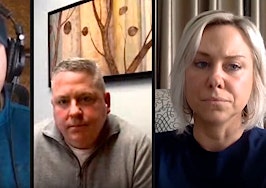More than 15 million Americans have lost their jobs since the start of the coronavirus pandemic, pushing the U.S. unemployment rate to its highest since the Great Depression. As a result, millions of homeowners are relying on mortgage forbearance plans provided by Fannie Mae, Freddie Mac, and several major banks to stay in their homes until the pandemic ends and the economy begins to recover.

Sara Singhas (Photo credit: MBA)
However, the elation about relief has turned into confusion as homeowners navigate the application process, repayment options, and what it means for the future of their families. To help clear up misconceptions, Inman chatted with the Mortgage Bankers Association Director of Loan Administration Sara Singhas and got the answer to your most common questions.
Here’s what she had to say:
Fannie Mae, Freddie Mac, and a number of banks and other loan servicers are offering mortgage forbearance plans that last anywhere from 90 days to one year. What should homeowners consider before applying for one of these programs?
Borrowers that are able to pay their monthly mortgage payment should continue to do so. Many borrowers’ financial situations are in flux during the pandemic and it is very important to work with their servicers to determine the appropriate length of forbearance given their particular situation.
Forbearance only delays payments owed, so borrowers will be required to repay the missed payments. Servicers are also dealing with very high volumes of borrowers in need.
For these reasons, it is important to take forbearance only for the time period in which the borrower is experiencing hardship and only if it is necessary. Typically, the initial period is 90 days. Borrowers that are still experiencing hardship at the end of the initial forbearance period can request additional forbearance periods for a total of 12 months.
What are the common misconceptions homeowners have about these programs, especially when it comes to repayment? Some homeowners think those payments will be added to the back of the loan when that’s not always the case. What specific questions should they be asking about repayment options?
Repayment options will vary depending on who the owner or investor of the loan is. Repayment by adding missed payments to the end of the loan is not available for all loans. Borrowers should talk to their servicer about what options are available to them.
Another misconception is that missed payments must be repaid in a lump sum at the end of a forbearance period. A lump-sum payment is an option, but not the only one for most loans. Other options often include entering into a repayment plan or modifying the loan.
Can homeowners who are already behind on their mortgage qualify for these forbearance plans?
Yes, for “federally backed” loans covered by the CARES Act, borrowers are eligible for forbearance even if they are already behind on their payments.
Some economists say the pandemic will lead us into a longer-term recession. What could happen if a homeowner applies for a forbearance plan and still isn’t able to pay at the end of the forbearance term?
Borrowers that need additional assistance after the forbearance period should ask their servicer about long-term loss mitigation options such as a loan modification.
How can homeowners plan for repayment during their forbearance period?
Borrowers should discuss repayment options with their servicer. If they have the ability to save money without forgoing other necessary expenses, it may make sense to do that so they can exit forbearance earlier or with different options. Repayment options will include repaying in a lump sum, entering into a repayment plan, or modifying the loan.
If a homeowner has a loan through a bank, credit union or servicer that hasn’t announced a forbearance plan, how can they negotiate one of their own?
Borrowers should contact their mortgage servicer about forbearance options. Under the CARES Act, borrowers with federally backed loans are eligible for forbearance assistance. Most borrowers outside of the CARES Act will be eligible for some type of forbearance, though the exact details will differ.













